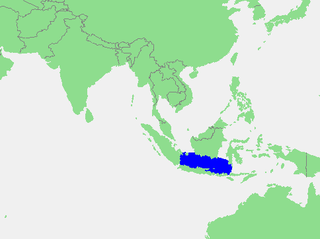
Johannes Thiele, full name Karl Hermann Johannes Thiele was a German zoologist specialized in malacology. Thiele was born in Goldap, East Prussia. His Handbuch der systematischen Weichtierkunde is a standard work. From 1904 until his retirement in 1925 he was the curator of the malacological collection at the Museum für Naturkunde in Berlin. Thiele described more than 1.500 new species of molluscs; until today their types are deposited with the Museum of Natural History in Berlin. Especially important are his works on the Mollusca of the First German Antarctica Expedition and of the German Deep Sea Expedition aboard the vessel Valdivia.
Geodia gibberosa, comonly known as the white encrusting sponge, is a species of sea sponge found in the Caribbean. It is eaten by hawksbill turtles. It was first described by Lamarck in 1815.

Geodia is a genus of sea sponge belonging to the family Geodiidae. It is the type genus of its taxonomic family.
Geodia exigua is a species of sponge that produces the sesquiterpene spiro compound exiguamide. The species was first described by Johannes Thiele in 1898. It is a marine organism known from Japan.
Geodia composita is a species of sponge in the family Geodiidae. The species was first described by Bösraug in 1913. It is found off the coasts of Mozambique.
Geodia agassizi is a species of sponge in the family Geodiidae. The species is found in the eastern tropical Pacific Ocean and was first described by Robert Lendenfeld in 1910.
Geodia alba is a species of sponge in the family Geodiidae. The species is found in the waters of Indonesia and was first described by Oswald Kieschnick in 1896 as Synops alba.
Geodia amadaiba is a species of sponge from the family Geodiidae. The species is found in the waters of Japan and was first described by Tanita & Hoshino in 1989.
Geodia hirsuta is a species of sponge in the family Geodiidae. The species is found in the waters of Indonesia and was first described by Sollas in 1886 as Cydonium hirsutum.
Geodia macandrewii is a species of sponge in the family Geodiidae. It is found in the waters of the North Atlantic Ocean. The species was first described by James Scott Bowerbank in 1858.
Geodia atlantica is a species of sponge in the family Geodiidae. It is found in the waters of the North Atlantic Ocean.
Geodia hentscheli is a species of sponge in the family Geodiidae. It is found in the waters of the North Atlantic Ocean. The species was described in 2010 by Paco Cárdenas, Hans Tore Rapp, Christoffer Schander & Ole S. Tendal.
Geodia amphistrongyla is a species of sponge in the family Geodiidae. The species is found in the tropical Pacific Ocean and was first described by Robert J. Lendlmayer von Lendenfeld in 1910.
Geodia anceps is a species of sponge in the family Geodiidae. The species is found in the western part of the Mediterranean Sea and was first described by Gualtherus Carel Jacob Vosmaer in 1894 as Synops anceps.
Geodia apiarium is a species of sea sponge in the family Geodiidae. It is found in the Gulf of Mexico off the coast of Florida.
Geodia arabica is a species of sponge in the family Geodiidae. It is found in the waters of the Arabian Sea and of the Red Sea. The species was first described by Henry John Carter in 1869.
Geodia carcinophila is a species sponge in the family Geodiidae. The species was first described by Lendenfeld in 1897. It is found in the waters of the Somali Sea around the Zanzibar Archipelago.
Geodia arripiens is a species of sponge in the family Geodiidae. It is found in the waters of the South China Sea. The species was first described by Nils Gustaf Lindgren in 1897.
Geodia conchilega is a species of sea sponge in the family Geodiidae. It is found in the Adriatic Sea.
Geodia nodastrella is a species of sponge in the family Geodiidae. It is found in the waters of the North Atlantic Ocean. The species was first described by Henry John Carter in 1876.



